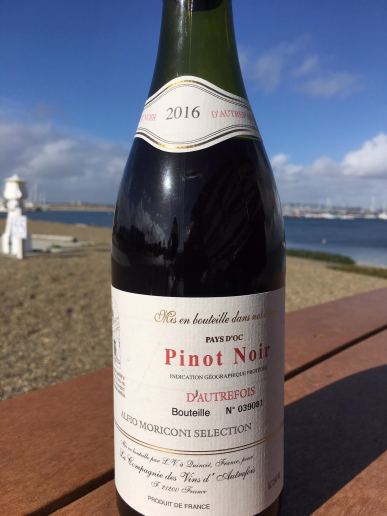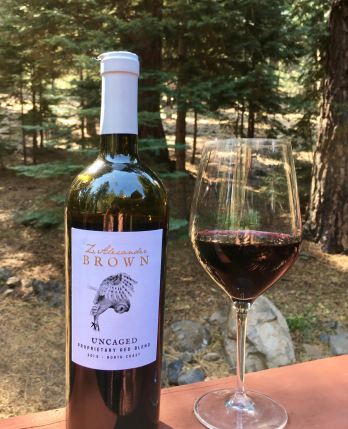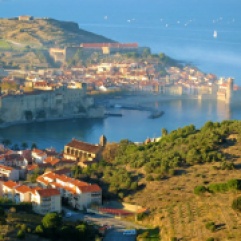
New York’s Finger Lakes viticulture area has come a long way in recent years. Home to more than 100 wineries centered around Keuka, Seneca, and Cayuga Lakes, the area has long been a source of excellent cool climate wines, and has recently been bringing home awards and earning some great press.
While commercial wine has been produced here since the mid-1800’s, a major change occurred in the 1960’s when Dr. Konstantin Frank successfully grew and produced wine from Vitis Vinifera grapes such as Riesling, Chardonnay, Pinot noir, Gewürztraminer, and Cabernet Sauvignon that had been grafted onto cold-hardy native rootstock. For years, it was relatively uncommon to find Finger Lakes wines other than Rieslings earning 90+ scores from Wine Spectator, Wine Enthusiast or Wine Advocate. That has certainly changed! Recently, I went to the region and sampled wines from 3 producers who have received some rave write-ups and scores.

My first stop was Ravines (https://RavinesWine.com) which featured 13 (thirteen!) wines which had received scores from 90 to 94 from Spectator, Advocate and Vinous Media. Ravines’ Rieslings, both dry and off-dry; Chardonnay; Pinot Noir and Cab Franc were all excellent old-world style offerings. Prices were also very good, mostly between $17 to $25. Their 2017 Cab Franc and 2016 Le Petit Caporal (Bordeaux blend) were exceptional.
Next on the tour was Shaw Vineyard (https://shawvineyard.com). I have blogged about Shaw’s Orange Wine before (https://fumblingviniferist.com/2017/06/19/orange-wine-a-rediscovered-style/) and on this visit tried several of their more traditional offerings. Steve Shaw ages his wine a good bit longer than most local vignerons, and one of my highlights of the day was a 2011 Merlot Steve had just released.
Finally, and my favorite, was Bellangelo winery (www.bellangelo.com). Winemaker Chris Missick is exceptionally knowledgeable in all facets of viticulture and enology. A military veteran and former attorney from Southern California, Chris is publishing a series of books taking the reader deep into Finger Lakes Wines. The first book in the series, “FLX Wine School, a Crash Course by Bellangelo Book 1”, covers the history of Finger Lakes wines, wine chemistry and basics of wine tasting. The book is approachable and comprehensively sourced and footnoted.
Bellangelo’s wines were all impressive. Chris has received a lot of press for Bellangelo’s sparkling wines, including a just-released sparkling Gewurztraminer. I am not a big fan of that varietal, but this 2017 sparkler is delicious! In addition, Bellangelo’s single vineyard Rieslings were some of the best I have tasted. A standout among the reds is the 2017 Cabernet Franc-Lemberger blend which was bright, complex and well-balanced.
Over the past few years I have made it a habit to visit the Finger Lakes every year. Given the trajectory in quality I have seen, I can’t wait for my next visit.



 The winery and vineyards are beautiful and entail beautiful views, outdoor seating and an authentic Italianesque outdoor brick pizza oven. The tasting room is an enormous hall of Texas stone exterior, wood timber framing and a high wooden ceiling, overlooking the outdoor patio and vineyards. Tasting room attendant Tijada was knowledgeable and friendly, and provided a wonderful tasting experience. She started me out with a Pinot Grigio made from California grapes and a Roussanne (a Rhone white variety) from Texas grapes, and then moved on to their excellent estate wines.
The winery and vineyards are beautiful and entail beautiful views, outdoor seating and an authentic Italianesque outdoor brick pizza oven. The tasting room is an enormous hall of Texas stone exterior, wood timber framing and a high wooden ceiling, overlooking the outdoor patio and vineyards. Tasting room attendant Tijada was knowledgeable and friendly, and provided a wonderful tasting experience. She started me out with a Pinot Grigio made from California grapes and a Roussanne (a Rhone white variety) from Texas grapes, and then moved on to their excellent estate wines.
 Australia is a prolific wine producer and exporter, shipping over 1 billion bottles per year to the international market. Most wine-lovers are familiar with the Barossa Valley, Australia’s best-known wine region, with world renown wineries such as Penfolds and Jacob’s Creek. Beyond Barossa, other broadly popular wines include the Rieslings of Clare Valley and the bold reds of McLaren Vale. But perhaps one of the least familiar wine regions of Australia is the Canberra region. This region within the Australian Capital District (analogous to our Washington DC) has been creating distinct Australian wines for over 160 years, receiving numerous accolades for high-quality value-priced wines, but attracting little notice in the United States.
Australia is a prolific wine producer and exporter, shipping over 1 billion bottles per year to the international market. Most wine-lovers are familiar with the Barossa Valley, Australia’s best-known wine region, with world renown wineries such as Penfolds and Jacob’s Creek. Beyond Barossa, other broadly popular wines include the Rieslings of Clare Valley and the bold reds of McLaren Vale. But perhaps one of the least familiar wine regions of Australia is the Canberra region. This region within the Australian Capital District (analogous to our Washington DC) has been creating distinct Australian wines for over 160 years, receiving numerous accolades for high-quality value-priced wines, but attracting little notice in the United States.




 know that the birthplace of Pinot Noir is the Burgundy region of France. All red Burgundies are Pinot Noirs, and they can command some of the highest prices in the wine world. But the Southern France region of Languedoc-Roussillon is better known for bolder, fruit-forward reds and world-class rosés.
know that the birthplace of Pinot Noir is the Burgundy region of France. All red Burgundies are Pinot Noirs, and they can command some of the highest prices in the wine world. But the Southern France region of Languedoc-Roussillon is better known for bolder, fruit-forward reds and world-class rosés. Wine (like music) is important to Zac Brown – he likes how it brings people together, and he likes how it connects one to the land. As the proprietor of Z. Alexander Brown wines, he has found a way to pursue his passion while sharing it with his fans. Z. Alexander Brown 2015 Uncaged proprietary red blend is a great way to become familiar with Zac’s wines. His philosophy is to “use the best growing practices with little intervention and a careful touch” to bring out the characteristics of the terroir. In this wine the terroir of the north coast of Sonoma shines through. Deep ruby in the glass, the bouquet overflows with dark fruits – berries and black plum, with a nice touch of tobacco and spice. On the palate, a perfect balance of fruit, earth and acidity. While the blend is proprietary, I would guess Zinfandel and Syrah make up good portion of it. This wine is delicious, and the high alcohol content of 14.5% is deceptive: the deep lingering fruit and light finish belie the high alcohol content. Best of all is the price. At less than $15 per bottle this has a killer QPR (quality-price ratio), and is currently featured in Vivino’s “Top 25 Californian Red Blends”. I recommend pairing this wine with a slab of smoked baby backs while playing Zac Brown’s “The Foundation” album on the stereo!
Wine (like music) is important to Zac Brown – he likes how it brings people together, and he likes how it connects one to the land. As the proprietor of Z. Alexander Brown wines, he has found a way to pursue his passion while sharing it with his fans. Z. Alexander Brown 2015 Uncaged proprietary red blend is a great way to become familiar with Zac’s wines. His philosophy is to “use the best growing practices with little intervention and a careful touch” to bring out the characteristics of the terroir. In this wine the terroir of the north coast of Sonoma shines through. Deep ruby in the glass, the bouquet overflows with dark fruits – berries and black plum, with a nice touch of tobacco and spice. On the palate, a perfect balance of fruit, earth and acidity. While the blend is proprietary, I would guess Zinfandel and Syrah make up good portion of it. This wine is delicious, and the high alcohol content of 14.5% is deceptive: the deep lingering fruit and light finish belie the high alcohol content. Best of all is the price. At less than $15 per bottle this has a killer QPR (quality-price ratio), and is currently featured in Vivino’s “Top 25 Californian Red Blends”. I recommend pairing this wine with a slab of smoked baby backs while playing Zac Brown’s “The Foundation” album on the stereo!



